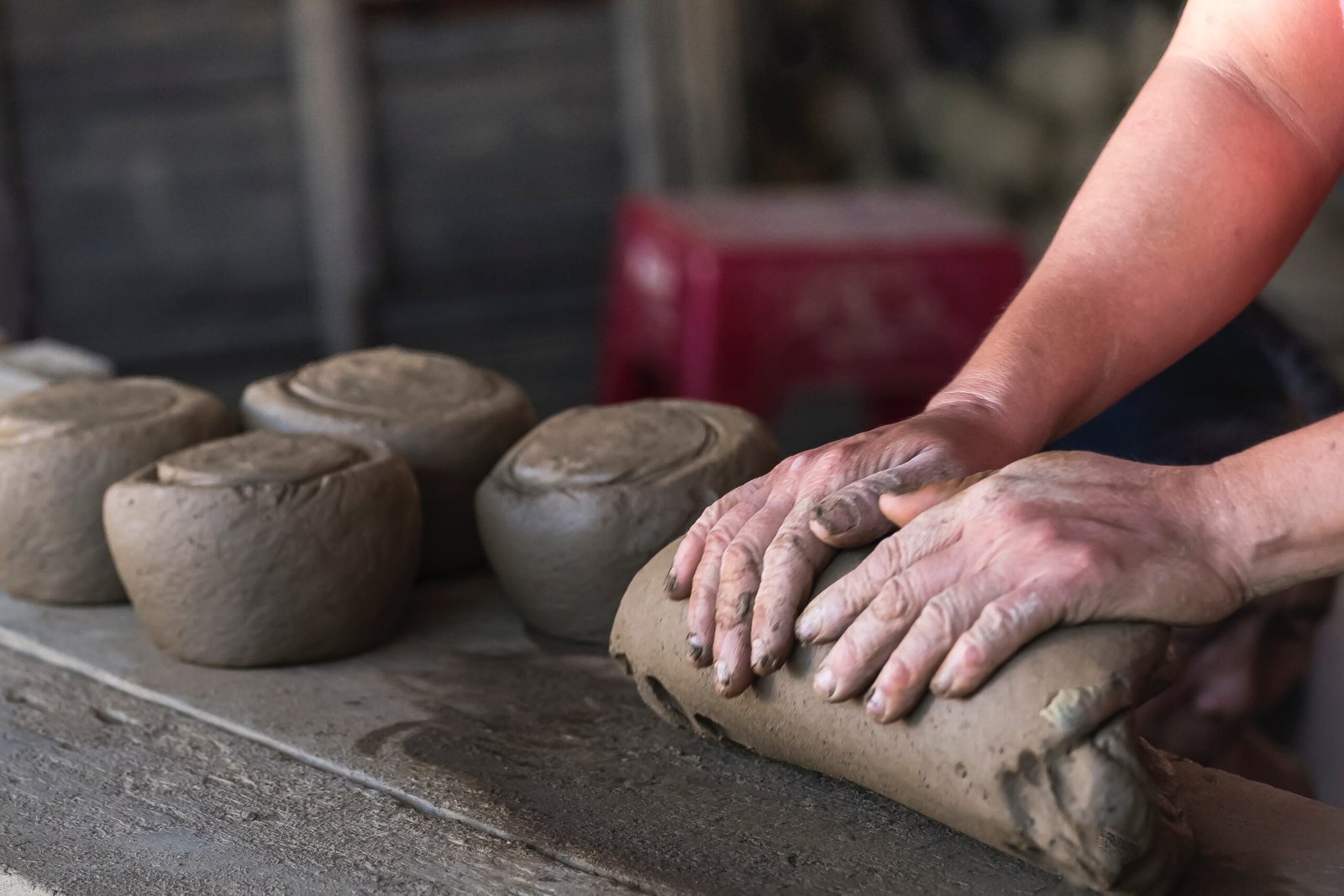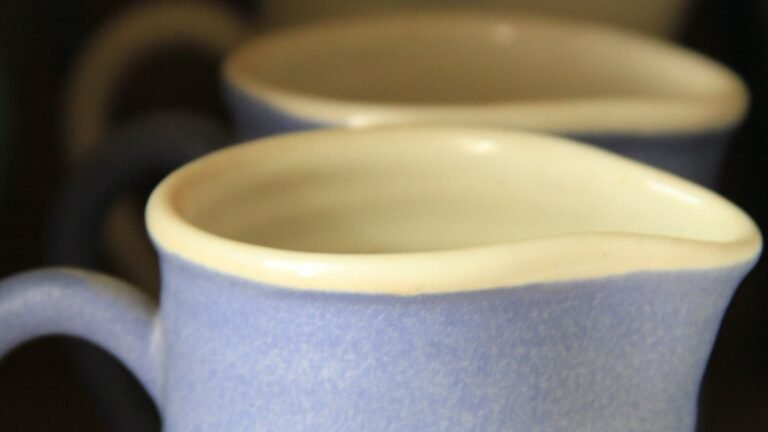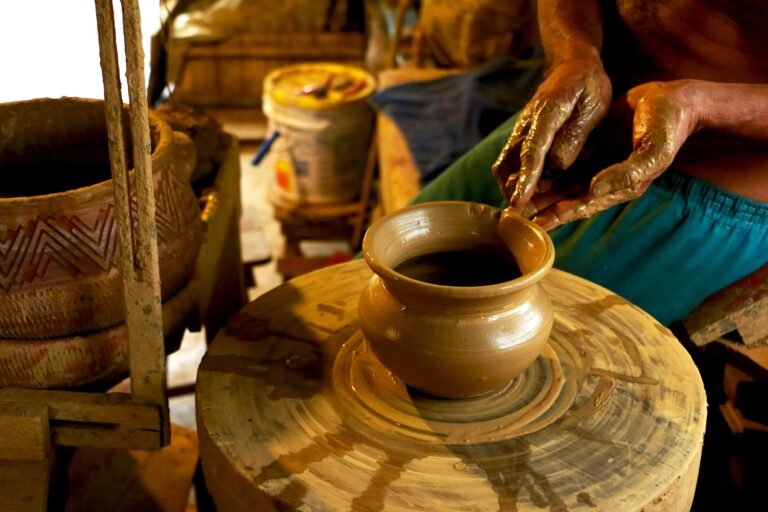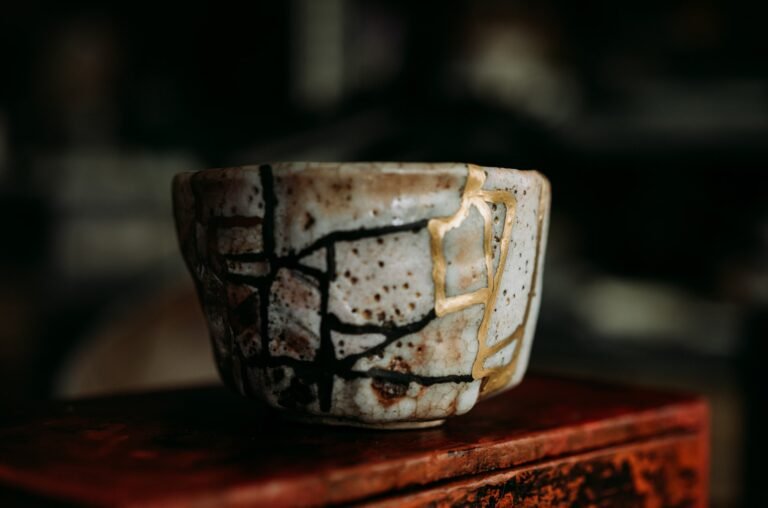How much clay amount do you use? 5 tips to throw better and taller pots
When making pottery, artists usually use a pottery wheel and some of them prefer making tableware in a free form, so they use hand building. No matter which technique you use, after some time of practicing, you will be able to use almost the same amount of clay each time.
If you want to enjoy variations in your work that is perfectly fine, but if you need a very specific amount of clay, and you want to stick to it every time, this is an article for you.
The amount of clay you need to use for a specific item should be multiplied by 1.13 because of shrinkage. After firing your pottery, the total shrinkage is about 13%, and to make your life easier, at the bottom of the article you can find a complete table with clay’s weight for a certain item.
To make your work a bit easier and tableware sets the same dimensions, it is best to set a standard when throwing. The shape of pottery sets is very important, especially if you want them to fit one into another and to store your sets on the shelf. To make a specific dimension without ending with a big irregular shape you have to think about shrinkage that is happening during the firing. Getting a perfect size plate, vase or bowl takes some experimenting.
If you want to start selling your art assets, the best way is to keep them somehow the same sizes. People usually like to buy sets, and it is good that you can offer them nice pieces in sets.
Read more: Do Handmade Ceramics And Pottery Sell Well Online? All You Need To Know!
Perfect Sizes For Handmade Tableware
Perfect size of course depends on your own preference, and it is usually the best practice to record your data.
The amount of clay will change depending on how tall you plan the pot’s foot to be and how much trimming it requires. If you want a larger pot, the more clay you will need per cubic centimeter due to thicker walls to proportionately reflect the pot’s size.
How Big Is A Pound Of Clay?
Dimensions of one pound of clay are 13 cm x 7 cm x 4 cm or in inches 5″ x 2 3/4″ x 1 1/2″
How Much Clay To Make A Mug
For a smaller mug of 0,2 liter or 8-ounce, you will need less than a pound of clay. Doing larger mugs you will need one to almost two pounds of clay.
How much clay is needed depends of course on the size of the mug.
How Much Clay Should I Buy?
For a single-use, this amount depends on what you want to make. To help you decide you can use the table down in the article.
If you are doing student classes we can use the general rule of thumb to plan for about a 1/2 pound or 220 grams of clay per student.
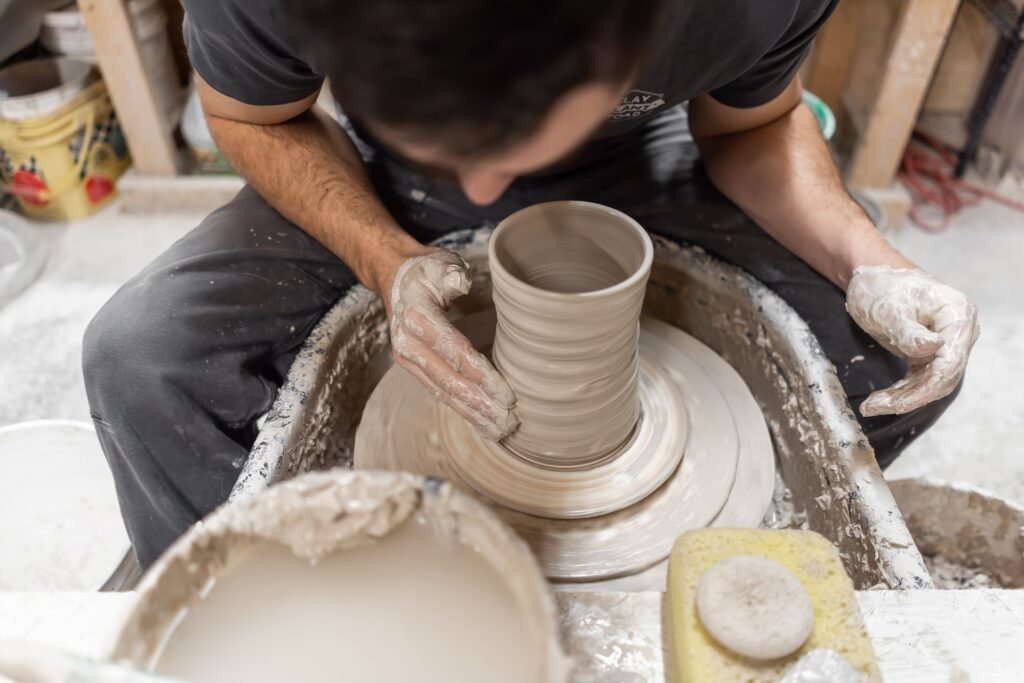
5 Tips To Throw Better And Taller Pots
Maybe you are a master when it comes to centering, opening, and even making some nice small pots but are you ready to try making something bigger than a mug or cup.
Have you ever been using the pottery wheel and asking yourself how to throw taller pots?
We have some tips for you:
- More clay
The easiest and the most obvious tip. But it is usually quicker to cut off all the extra clay you don’t need from the top or the bottom then start over and over again with your pot. As you do this more often, your practice will become better and better, and you will know what is the right amount of clay every time.
- Stiffer clay
With stiffer clay, it is easier to make taller pots on the wheel. When clay dries out it becomes stronger and can support more weight. On the other hand, this clay is harder to manipulate and takes more time to center.
- Try A Different Clay
All different kinds of clay have different and unique properties. Choose a few different types of clay and experiment to see what is the best fit for your craft.
- Sponge and Water
When you spin the pottery wheel, using the water is very important to reduce the friction and stop clay sticking to your fingers. But clay absorbs water very well and that makes your clay softer and more likely to collapse.
You can also use a sponge to wet the clay and squeeze it little by little until you get the right amount.
- Consistent Pulls
Steady consistent pulls are essential to make sure that your pots have even walls thickness especially for tall pots.
To avoid thin spots where your pottery is more likely to collapse, the best way is to make a complete pull from the bottom to the top without stopping in the middle. To do this, you need to be a little higher than your pot.

